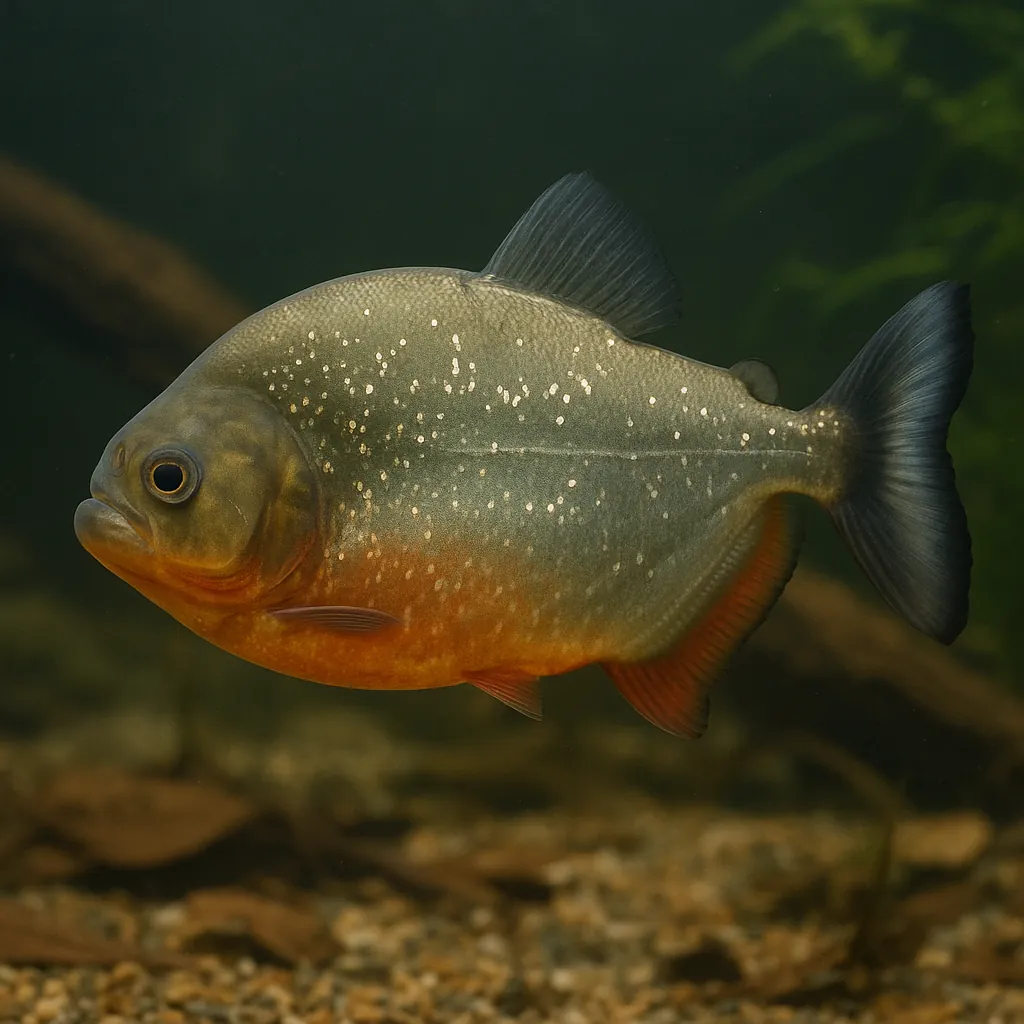
Orinoco piranha
Introduction
The Orinoco piranha (Pygocentrus cariba), also known as the black spot piranha, is a captivating species native to the Orinoco River basin in South America. Renowned for its striking appearance and dynamic behavior, this fish has piqued the interest of aquarists seeking a unique addition to their tanks. However, due to its specific care requirements and potential aggression, the Orinoco piranha is best suited for experienced fishkeepers prepared to meet its needs.
Care and Environment
Proper care for the Orinoco piranha involves meticulous attention to tank size, water parameters, filtration, and diet to ensure a healthy and thriving environment.
What is the minimum tank size required for an Orinoco piranha?
A single Orinoco piranha requires a minimum tank size of 100 liters to accommodate its active nature and potential growth.
What are the ideal water parameters for maintaining an Orinoco piranha?
Maintain water temperatures between 23°C and 28°C, with a pH range of 6.2 to 7.0, and water hardness between 6 to 20°N (107.14 to 357.14 ppm).
How should the tank be decorated to suit an Orinoco piranha?
Incorporate a dark substrate, subdued lighting, and ample hiding spots using driftwood and robust plants to mimic their natural habitat and reduce stress.
Filtration is crucial due to the Orinoco piranha's messy eating habits. Utilize a powerful filtration system to maintain water quality, and perform regular water changes of 10% weekly or 25% bi-weekly.
Feed a varied diet including high-quality pellets, frozen or live foods like shrimp and small fish, and occasional fruits or vegetables. Avoid feeding live feeder fish to prevent disease transmission.
Origin and Habitat
The Orinoco piranha is indigenous to the Orinoco River basin lowlands and the Llanos region in Venezuela and Colombia. They inhabit various freshwater bodies, including large rivers, streams, lagoons, ponds, lakes, and reservoirs. These environments are characterized by warm, slow-moving waters with dense vegetation, providing ample cover and food sources.
Temperament and Compatibility
Orinoco piranhas are known for their aggressive and territorial behavior, especially as they mature. They are shoaling fish, and it's recommended to keep them in groups of at least four to reduce aggression among individuals.
Can Orinoco piranhas be kept with other fish species?
Due to their aggressive nature, it's advisable to keep Orinoco piranhas in a species-only tank to prevent potential harm to other fish.
How can aggression among Orinoco piranhas be managed?
Providing a spacious tank with ample hiding spots and maintaining a group of at least four individuals can help manage aggression and promote a more harmonious environment.
Interesting Facts
The name "Cariba" means "cannibal" in the native language, reflecting the species' propensity for cannibalism among its kind. In the wild, Orinoco piranhas are generalists, feeding on fish, crustaceans, insects, plants, fruits, nuts, and seeds. They are also known to be attracted to the smell of blood and frantic splashing, behaviors that have contributed to their fearsome reputation.
Sources
All information in this article has been gathered from the following reputable sources:
Overview
Recommended Tank Size 105.7 Gallons (for groups of 4 or more) |
Minimum Group Size 4 |
Maximum Adult Size |
Minimum Tank Volume 26.4 Gallons |
Maximum Adult Length 11 inches |
Average Adult Length 9.8 inches |
Shoaling (6+ required) Yes |
Preferred Water Type Freshwater, soft, acidic to neutral |
Temperature Range (°C) 23–28 |
pH Range 6.2–7.0 |
Water Hardness (dGH) 6–20 |
Typical Lifespan (years) 15 years |